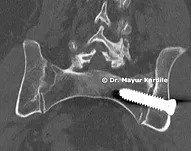 Book Appointment
Book Appointment
 +91 77740 40002
+91 77740 40002
This is a procedure in which the target of lumbar decompression surgery is achieved with minimal collateral tissue trauma. In this special technique, nerve roots at both the sides of the spine can be decompressed by making single-sided keyhole entry in the lamina.
Advantages of doing Minimally invasive decompression over the traditional open approach are
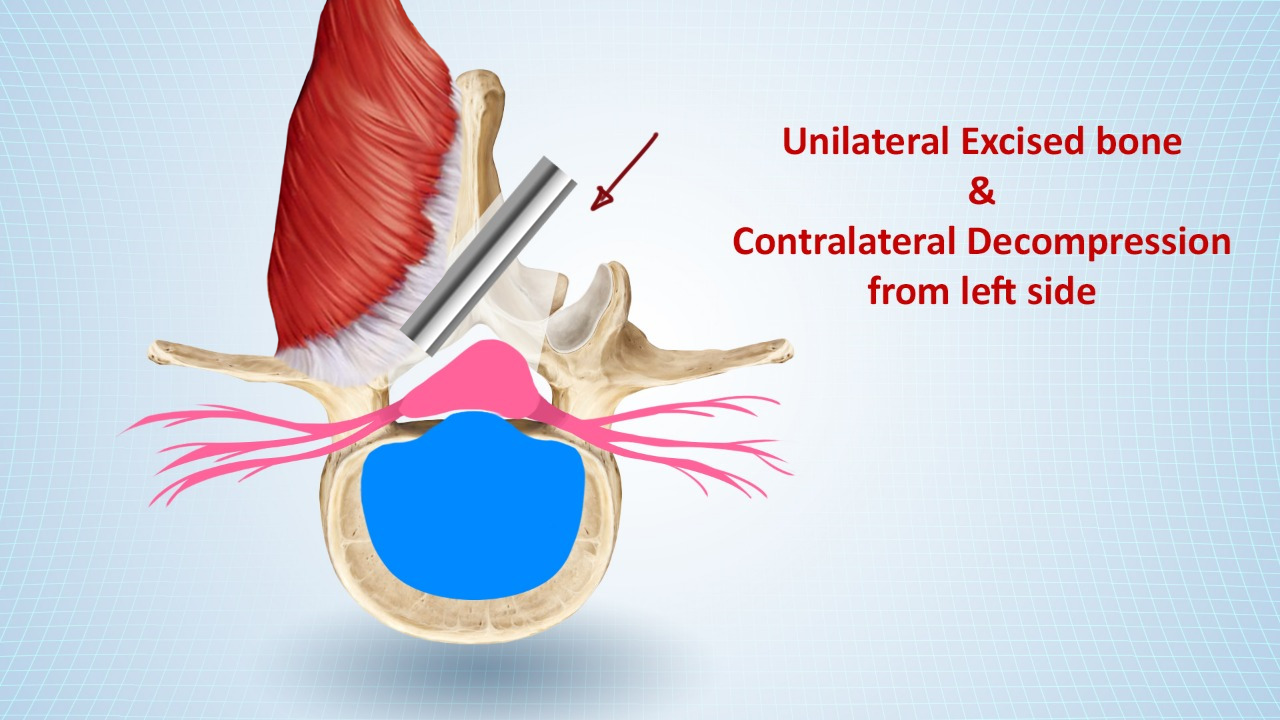
Most of the patients with Lumbar disc herniations can be treated with non-operative treatments like rest, pain medications, pain blocks and physiotherapy. Some patients require surgery to remove the herniated disc and free the compressed nerve roots. Microdiscectomy (Microscope assisted discectomy)
This approach is a workhorse for spinal deformity correction surgery in conditions like scoliosis, kyphosis and spinal reconstructions
When fusion surgery is needed for the lower lumbar spine especially at L4-5 and L5-S1 level, it is best done through the anterior approach. In this surgery, the incision is on the belly and a bloodless tissue plane is developed to reach the Lumbar spine
Anterior Lumbar Interbody Fusion surgery can restore normal spine alignment and lumbar lordosis. This procedure is minimally invasive and does not damage any muscles or structures of the spine. It achieves indirect nerve decompression without even touching the nerves (extremely useful in revision or second-time spine surgery wherein the nerves are already scarred.)
Anterior lumbar interbody fusion. the most minimally invasive technique of lumbar fusion. Dr. Mayur Kardile is the best spine surgeon to do this operation
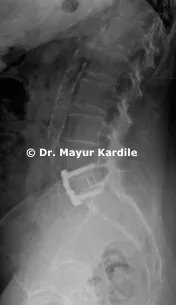
OLIF is a minimally invasive technique of Lumbar fusion. Surgery is done through very small incisions on the side of the belly. In a single operative position, the surgeon can access disc spaces from L2 to S1. This is a useful approach in cases of adult spinal deformity surgery.
Advantages of OLIF Surgery are
XLIF surgery is done through a small incision on the side of the belly. It is another minimally invasive lumbar fusion technique. L2-3 and L3-4 are the lumbar levels most easily accessed by this technique.
Lumbar Fusion can also be done through an incision on the back. Space between the two vertebrae is cleared through a channel created to remove the disc material. Bone graft and cage are inserted to achieve solid fusion. This is supported with Pedicle screw instrumentation.
Though TLIF is a good technique for lumbar fusion, it involves more muscle dissection as compared to the ALIF and OLIF technique and it is difficult to restore the normal lumbar lordosis and spine alignment through this approach.
This is a procedure in which the herniated disc in the cervical spine is removed and is replaced by a cage and bone graft to achieve fusion in the involved spinal segments. Surgery is done through a small incision on the front part of the neck and patients can be discharged from the hospital ina day or two.
Indications: Cervical Disc Herniation, Ossified Posterior Longitudinal Ligament (OPLL), Infections and Tumors. ACDF anterior cervical discectomy and fusion. patients can get quick relief from neck and arm pain with this surgery

Selected patients with cervical disc herniations can be treated with decompression of the cervical nerve root through minimally invasive posterior cervical decompressions. This procedure can avoid fusion surgery for the cervical spine and preserve motion while achieving pain relief.
Indications : Cervical Disc Herniation, Cervical facet joint hypertrophy
This is a surgical procedure to widen the space available for the cervical spinal cord. It is a useful procedure for patients with compressive cervical myelopathy wherein the spinal cord gets squeezed due to the degenerative changes in the cervical spine.
This procedure involves the use of plates and screws to widen the space for the spinal cord
Sometimes, the cervical spine needs to be fixed with screws, rods and bone graft to achieve fusion. This can be done with a wide variety of implants like Lateral Mass Screws, Pedicle screws, Translaminar screws, Occipito-Cervical Plate.
Use of individual implants depends on the disease-specific condition of the patient Cervical laminoplasty and lateral mass fusion. This is the best surgery for posterior cervical fusion and decompression
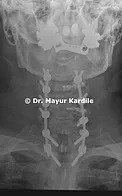
This surgery involves pedicle screw instrumentation through an incision at the back. The bone graft is used to achieve spinal fusion. Depending on the goal of the surgery, a series of deformity correction maneuvers or spinal osteotomies can be done through this approach.
This approach is a workhorse for spinal deformity correction surgery in conditions like scoliosis, kyphosis and spinal reconstructions. Posterior spinal fusion scoliosis surgery with pedicle screw fixation. patients have a speedy recovery
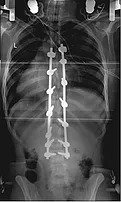
This surgery is done in selective patients with Sacroiliac joint dysfunction and pain. The procedure involves decortication and putting 2 large screws across the SI joint and achieving fusion of the joint. All this is done through a 3 cm incision on the buttock area with minimal blood loss.
In properly selected patients, this technique can yield gratifying results.
